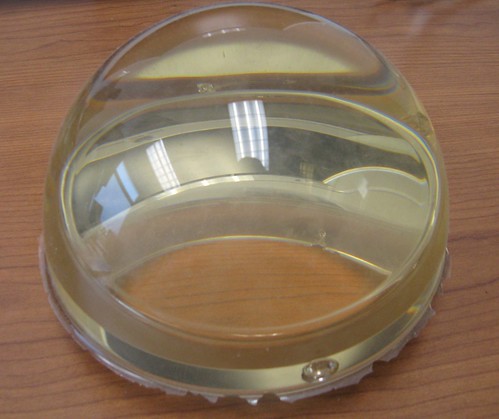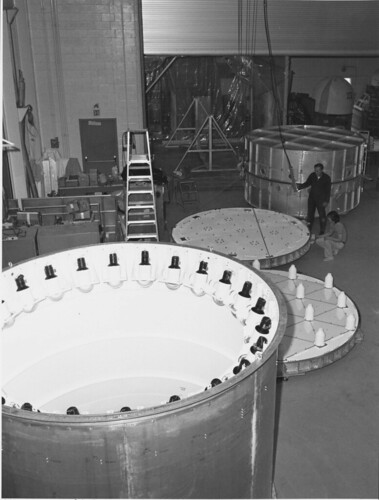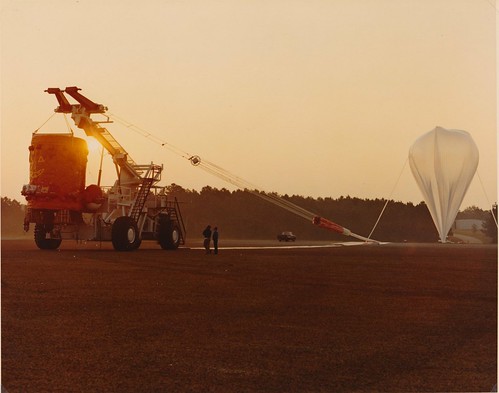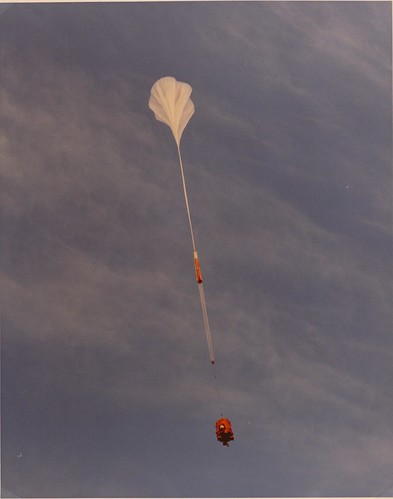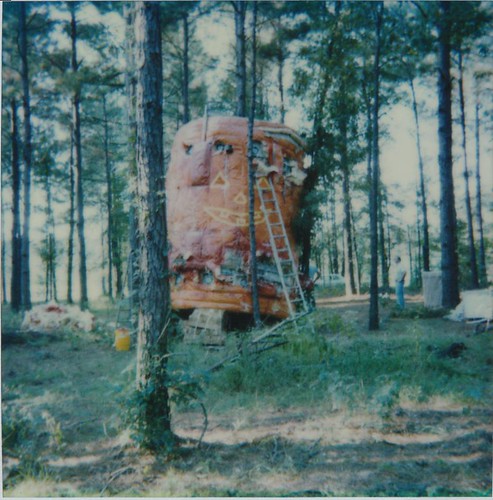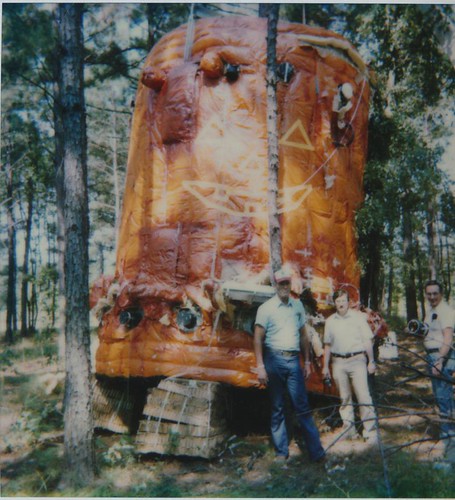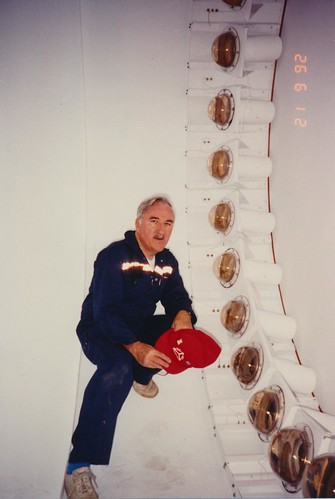What’s This? #3 – The big reveal!
- By Sara Mitchell
- January 3, 2012
- Comments Off on What’s This? #3 – The big reveal!
Our last post of 2011 was another in our What’s This? series – we posted a mysterious image (or three, this time) and asked for people to guess what they were looking at. Our first two challenges were reasonably easy, and I think our hints helped a lot of readers guess correctly. So we made things harder this time, and picked an object that stumped us when we first saw it sitting on someone’s desk!
So what is this thing?
It’s a hemispherical lens for one of the vacuum photomultiplier tubes used in the High Energy Gas Cherenkov Spectrometer (HEGCS) experiment flown by NASA in 1983 on a high-altitude balloon. The lens is cast of RTV (room temperature vulcanization) optically-clear silicone rubber, which makes it feel sort of like a big super-bouncy ball!
The photomultiplier tube/lens assembly was used in a larger detector system which was looking for cosmic-ray nuclei traveling near the speed of light. Light was collected by a ring of 5″ diameter photomultiplier tubes whose angular sensitivity for collecting light was improved by adding these hemispherical lenses. In the image below, you can see the ring of lenses around the edge of the open instrument – this picture was taken while HEGCS was being prepared at NASA Goddard.
For thermal control in the intense sunlight at flight altitude, the HEGCS instrument was painted orange. The HEGCS team couldn’t help but notice that it greatly resembled a huge pumpkin. The resemblance was further improved by the addition of a Jack-O-Lantern face. Here’s the great pumpkin being launched from Palestine, Texas, on September 30, 1983.
Following its flight, the instrument landed in the woods of northern Louisiana and the huge Halloween decoration was a minor sensation in the local papers. The Shreveport Journal‘s front page article about the landing (and subsequent local power outage, as the balloon’s parachute knocked down electrical lines) proclaimed, “It came from the sky!”
The HEGCS instrument was brought back to NASA’s Wallops Flight Facility and stayed in storage there for almost a decade. In 1992, a team visited Wallops and took apart the instrument, salvaging various pieces for potential re-use (as well as a bit of nostalgia). In the picture below, you can see the ring of lenses once again, right before it was disassembled.
One of these lenses made it back to Goddard and sits on the desk of Dr. John Mitchell, which is where we spotted it and decided to snap a photo for What’s This? almost 30 years after the flight of the HEGCS instrument.
To learn more about NASA’s balloon-borne astrophysics projects, you can listen to our two-part podcast interview with Dr. Mitchell about “Science at the End of the Earth” from 2009 (part 1, part 2). Special thanks to Dr. Thomas Hams for helping us track down the photos from HEGCS in the 1980s!
So who won the What’s This? challenge this time? We had a number of people guess that it was a lens, some with a bit more detail. Among our close guesses, we randomly drew the entry by Caroline Ross (who entered on Facebook). She initially guessed that it was “some kinda lens,” following up later to add, “a telescope (fish eye) lens.” That’s pretty close – it’s basically a silicone fisheye lens that gathered extra light for the HEGCS detectors!
Congrats to Caroline, and thanks to our other entries on the blog, Facebook, and Twitter! We’ve been collecting pictures to run more of these in 2012.


